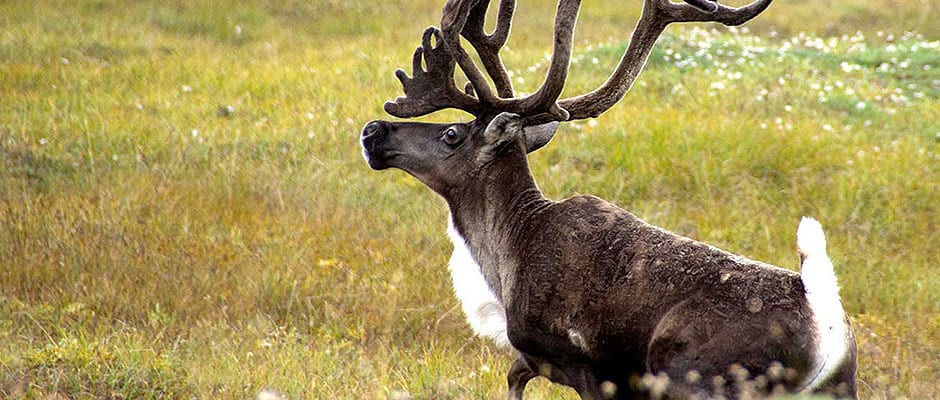Share this article
Climate Change Could Affect Habitats in Alaska
Climate change could mean an increase in some species and a decrease in others in Alaska’s Arctic and subarctic regions, according to a newly published study.
Researchers projected the effects of climate change on habitats for 162 bird species and 39 species of mammals in 62,884 square miles in Alaska, according to Bruce Marcot, a research wildlife biologist with U.S. Forest Service and the lead author of the study, which was published in the journal Climatic Change. Marcot and his coauthors from Alaska Ecoscience, National Park Service, and U.S. Geological Survey found almost 97 percent of birds and mammals in Alaska’s northwest Alaskan Arctic and subarctic regions will either gain or lose habitat as a result of climate change.
The study of wildlife in the Arctic was an “early warning about climate change for the rest of the continent,” Marcot said. As a result, making projections in this region is important.
Marcot and his coauthors set up a state-transition model to determine the influence of climate shifts on ecotypes in the area. Then, they linked wildlife habitats to an ecotype. From there, they made projections under three different outcomes: the influence of climate change in the area, various intensities and shifts of temperature, and biophysical factors such as the impact of fire and the expansion of tall shrubs and trees. Using this information, the researchers projected wildlife habitat availability by relating recent and projected vegetation changes to the habitat of the birds’ and mammals’ habitats.
Marcot and his colleagues found 52 percent of birds and mammals in the area would have habitat expansion and 45 percent would see decreases in their habitats. The remaining three percent would experience no habitat change.
Based on their research, the scientists hypothesized that woodland and forest species such as grouse and black bear will see an increase in habitat while species occupying meadow and low-shrub habitats like caribou and other small animals such as minks or muskrats will see a decrease in their habitat. They also found more mammals than birds will experience habitat declines. And, species used for hunting might also experience habitat loss, too, Marcot said. “The loss of habitat of species that are hunted for income could have very important implications for local people in the area,” he said.
Marcot said climate change might also influence soil in the region. The study predicts species such as shrews, lemmings and squirrels will suffer a habitat decline. These species help incorporate organic matter in the soil, but if their habitat is lost, that function might decline, Marcot said.
Although the study makes suggestions about the influence of climate change on Alaskan habitat, Marcot said there are, of course, unforeseen changes and ecological surprises that might unfold in the area.
“This study is a first approximation of what could happen,” Marcot said. “I hope others use this study to find out more over time and get a more accurate idea of changes to come.”
Header Image:
A caribou looks onward in Gates of the Arctic National Park and Preserve in Alaska. Researchers recently found that climate change could either increase or decrease habitat for a number of species found in Alaska such as caribou and minks.
Image Credit: Zak Richter, National Park Service








